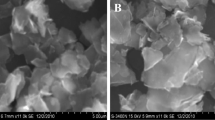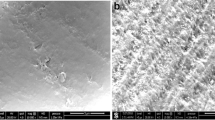Abstract.
This paper presents a simple and reliable method for separating the anodic peaks of dopamine (DA) and ascorbic acid (AA). Good electrochemical responses of DA and AA can be obtained at an electrochemically pretreated glassy carbon electrode (PGCE). The electrode reaction of DA is a quasi-reversible process, but the oxidation of AA is entirely irreversible. Consequently, the PGCE can be used to separate the anodic peaks of DA and AA. The separation can be higher than 290 mV, and the detection limit (S/N=3) of DA is 6.0×10−8 M. This PGCE is very stable and can be used for as long as four weeks.
Similar content being viewed by others
Author information
Authors and Affiliations
Corresponding author
Rights and permissions
About this article
Cite this article
Gu, H., Xu, Y., Peng, W. et al. A Novel Method for Separating the Anodic Voltammetric Peaks of Dopamine and Ascorbic Acid. Microchim. Acta 146, 223–227 (2004). https://doi.org/10.1007/s00604-003-0177-z
Received:
Accepted:
Published:
Issue Date:
DOI: https://doi.org/10.1007/s00604-003-0177-z




